Rainforests, often referred to as the lungs of the Earth, are home to some of the most diverse ecosystems on the planet. They house countless species, many of which are rare or endangered.
Unfortunately, deforestation poses a significant threat to these habitats and their inhabitants, leading to dire consequences for global biodiversity and the health of our planet.
The Importance of Rainforest Ecosystems
Rainforests play a critical role in regulating the Earth’s climate, producing oxygen, and serving as reservoirs of biodiversity. They are home to approximately 50% of all known species, many of which are endemic and cannot survive elsewhere. These ecosystems also support the livelihoods of indigenous communities and offer potential resources for medicine and agriculture.
Endangered Animals of the Rainforest
1. Orangutans
Orangutans, native to the rainforests of Borneo and Sumatra, are critically endangered due to habitat destruction caused by logging, palm oil plantations, and illegal hunting. These intelligent primates rely heavily on trees for food, shelter, and travel.
Key Facts About Orangutans:
- Diet: Fruits, leaves, and insects.
- Habitat Loss: Nearly 80% of their natural habitat has been lost in the past 20 years.
- Population Decline: The Bornean orangutan population has decreased by more than 50% in the last decade.
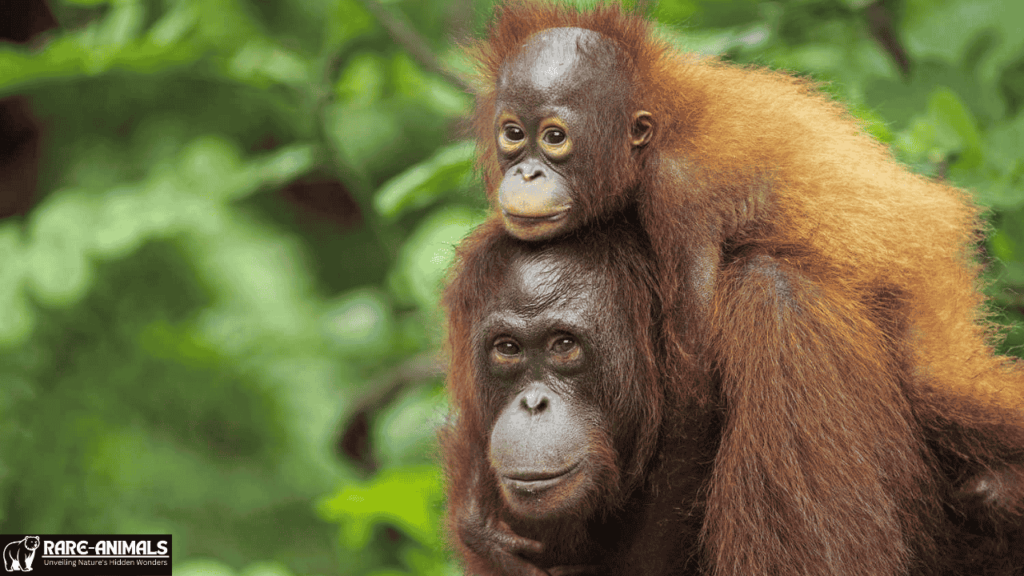
2. Jaguars
Jaguars, the apex predators of the Amazon rainforest, are facing severe threats from deforestation and poaching. As forests are cleared for agriculture and cattle grazing, jaguars lose their hunting grounds and are increasingly at risk of human-wildlife conflict.
Key Facts About Jaguars:
- Diet: Carnivorous, feeding on deer, capybaras, and other large prey.
- Habitat: Found primarily in the Amazon basin.
- Threats: Habitat fragmentation and illegal trade of their fur.
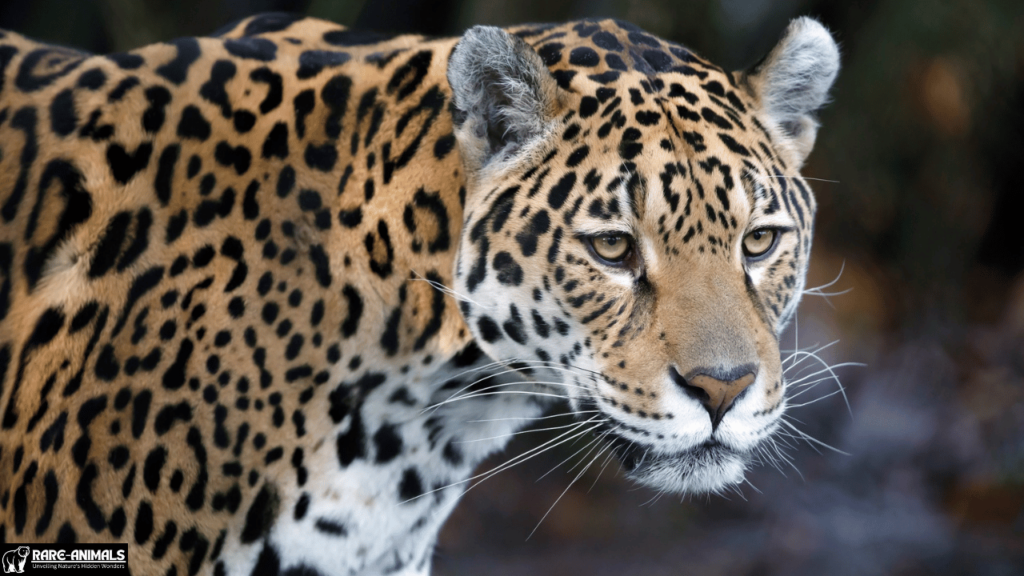
3. Harpy Eagles
The harpy eagle, one of the largest and most powerful raptors, is becoming rare in regions where deforestation is rampant. These birds depend on large, mature trees for nesting and hunting.
Key Facts About Harpy Eagles:
- Diet: Monkeys, sloths, and other medium-sized mammals.
- Nesting: Require tall trees in dense forests.
- Threats: Loss of nesting sites and declining prey populations.
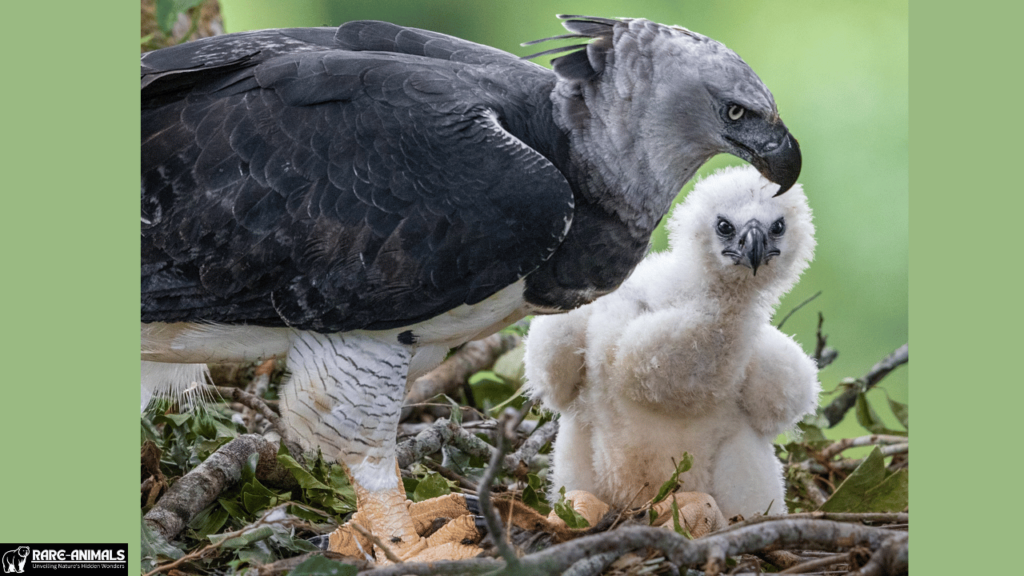
4. Poison Dart Frogs
These small, brightly colored amphibians are iconic rainforest species. Their populations are severely impacted by habitat destruction, climate change, and pollution.
Key Facts About Poison Dart Frogs:
- Diet: Insects, which contribute to their toxic skin secretions.
- Habitat: Found in Central and South American rainforests.
- Threats: Logging, agriculture, and collection for the pet trade.
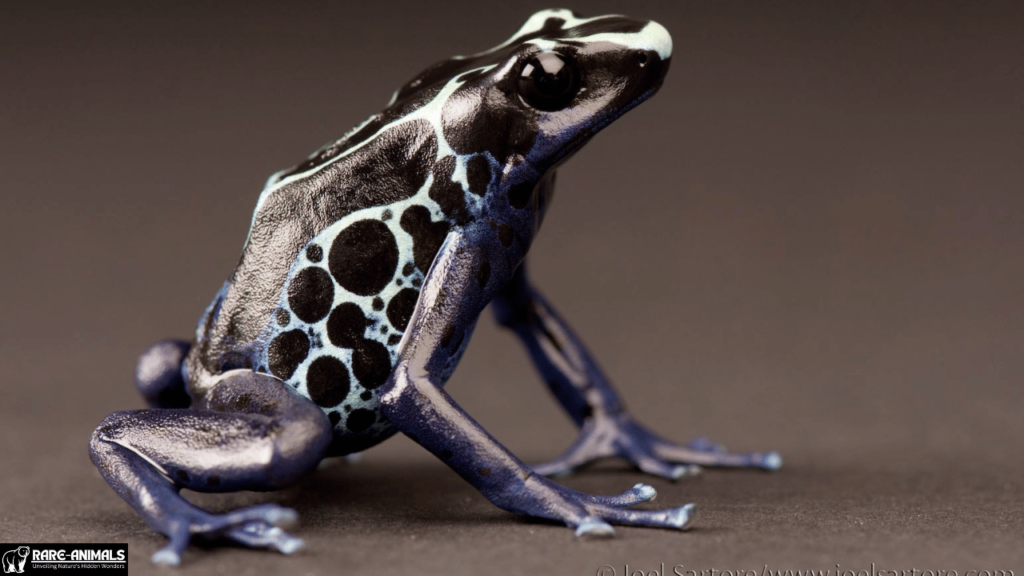
The Impact of Deforestation on Rainforest Animals
Deforestation affects animals in multiple ways, including loss of habitat, food scarcity, and increased vulnerability to predators and human activities.
1. Habitat Destruction
When trees are felled, animals lose their homes and are forced to migrate to less suitable areas. This displacement often leads to decreased reproduction rates and higher mortality.
2. Food Chain Disruption
Deforestation disrupts the intricate food web within rainforests. Herbivores may struggle to find enough vegetation, while predators lose their prey, leading to cascading effects throughout the ecosystem.
3. Increased Human-Wildlife Conflict
As animals venture into human settlements searching for food and shelter, conflicts arise. For example, jaguars may prey on livestock, leading to retaliatory killings.
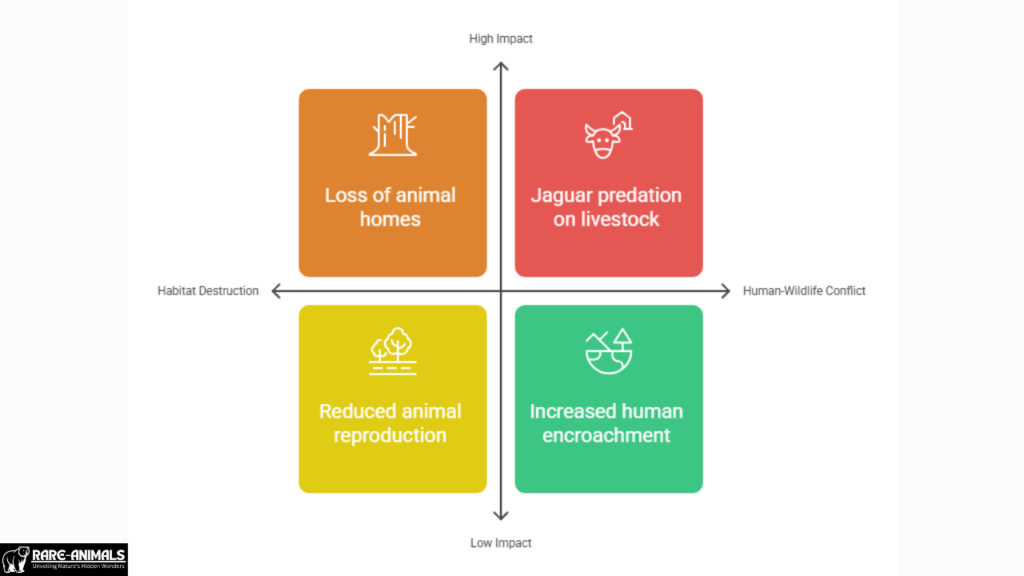
Conservation Efforts and Solutions
1. Sustainable Forestry Practices
Promoting sustainable logging and agriculture can help reduce the destruction of rainforests. Certification systems like FSC (Forest Stewardship Council) ensure responsible management of forest resources.
2. Protected Areas
Establishing and maintaining protected areas and wildlife corridors can safeguard critical habitats for endangered species.
3. Community Engagement
Involving local communities in conservation efforts is vital. Indigenous knowledge and sustainable practices can play a significant role in protecting rainforests.
4. Reforestation Programs
Replanting native trees and restoring degraded land can help rebuild habitats for rainforest animals. Organizations like the Rainforest Alliance work globally to promote such initiatives.
5. Reducing Demand for Deforestation-Driven Products
Consumers can make a difference by choosing sustainably sourced products, avoiding palm oil, and reducing meat consumption.
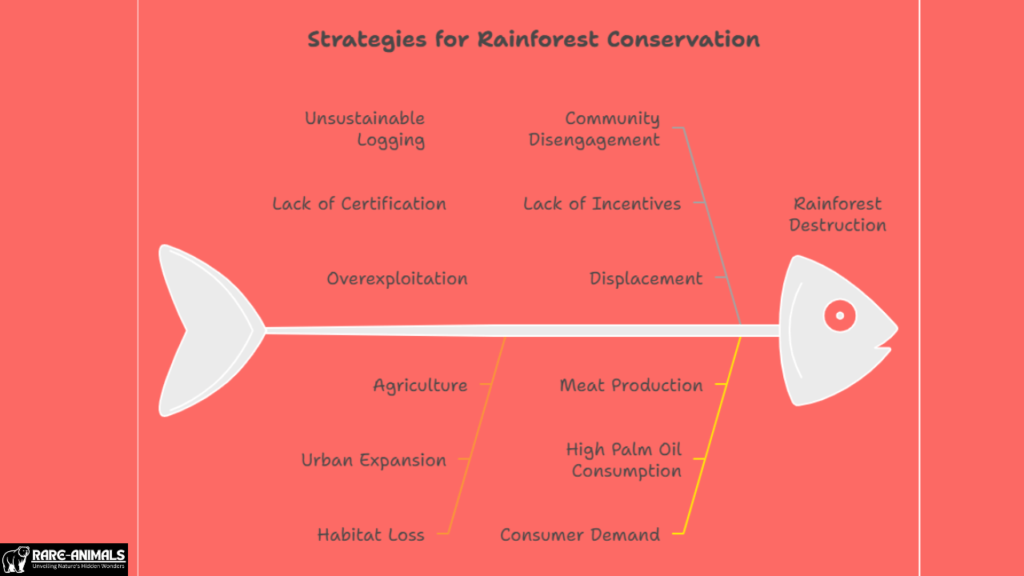
FAQs
Q1: What are the main causes of deforestation in rainforests?
A1: The primary causes include logging, agriculture (especially palm oil and soy production), cattle ranching, mining, and infrastructure development.
Q2: How does deforestation contribute to climate change?
A2: Trees store carbon dioxide, and when they are cut down or burned, this carbon is released into the atmosphere, contributing to global warming.
Q3: Are there any success stories in rainforest conservation?
A3: Yes, countries like Costa Rica have successfully reversed deforestation trends through reforestation programs, ecotourism, and sustainable practices.
Q4: How can individuals contribute to rainforest conservation?
A4: Supporting conservation organizations, choosing sustainable products, reducing waste, and spreading awareness are effective ways to contribute.
Q5: Why are rainforests referred to as the “lungs of the Earth”?
A5: Rainforests produce a significant portion of the world’s oxygen and act as carbon sinks, absorbing large amounts of CO2 from the atmosphere.
Conclusion
Rainforest animals, from the majestic jaguar to the tiny poison dart frog, are invaluable to Earth’s biodiversity. Protecting these species requires collective action against deforestation and unsustainable practices.
By supporting conservation efforts and making eco-conscious choices, we can help preserve these vital ecosystems for generations to come.

Alveena is an experienced content writer with a knack for crafting engaging and insightful pieces. She thrives on breaking down complex ideas and presenting them as clear, captivating content that resonates with readers.

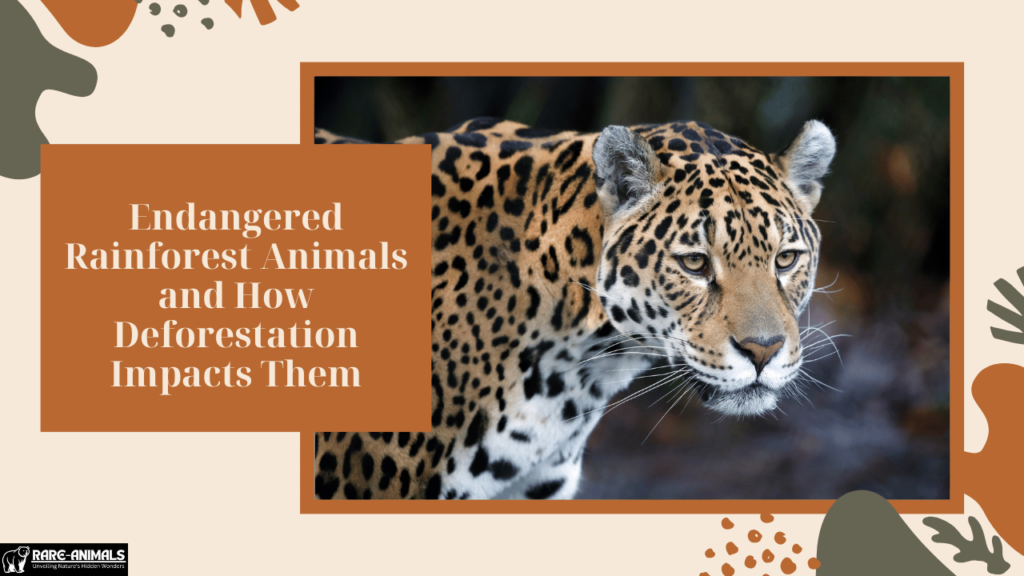

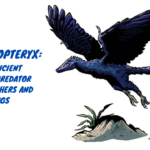




3 thoughts on “Endangered Rainforest Animals and How Deforestation Impacts Them”